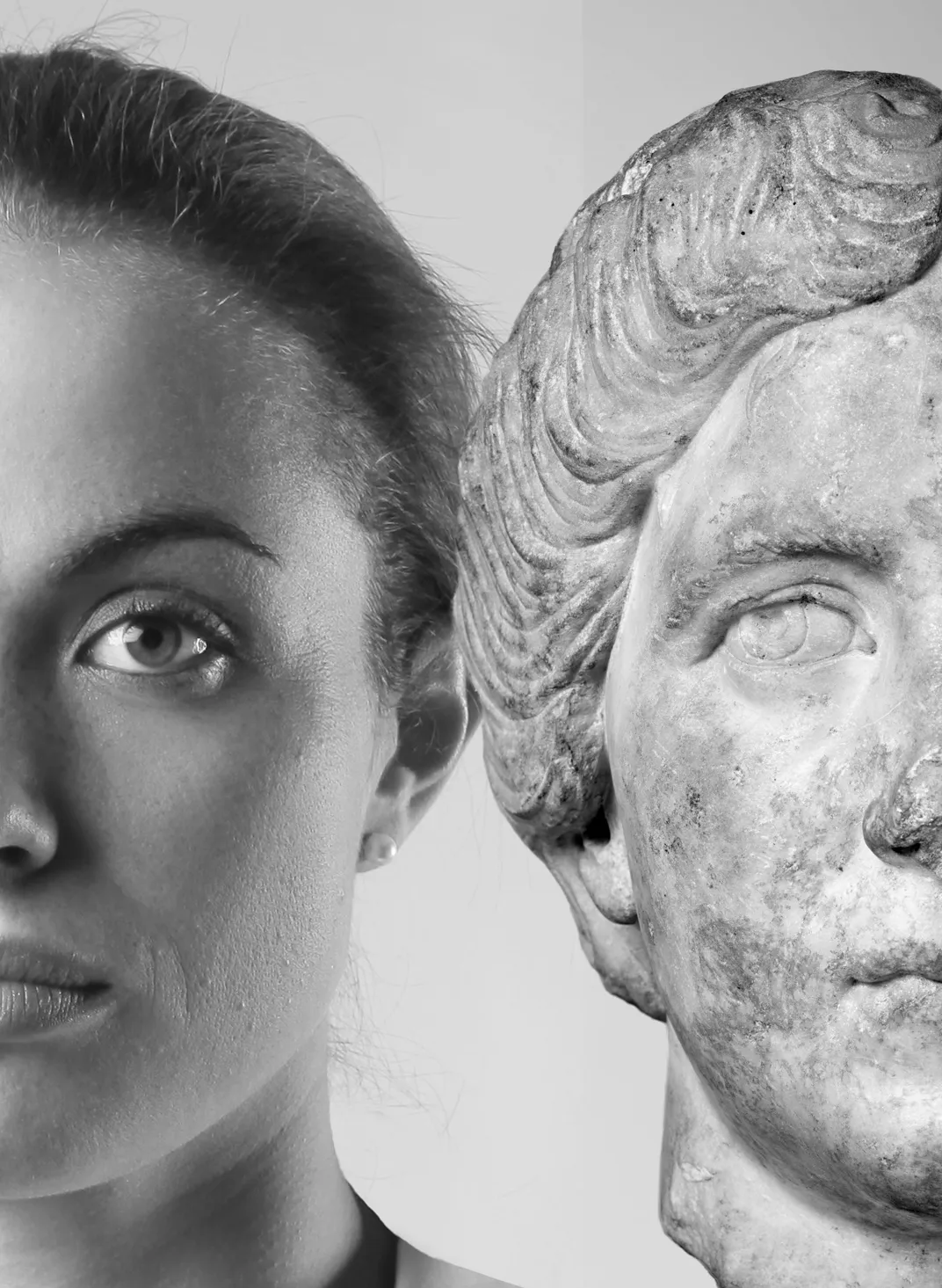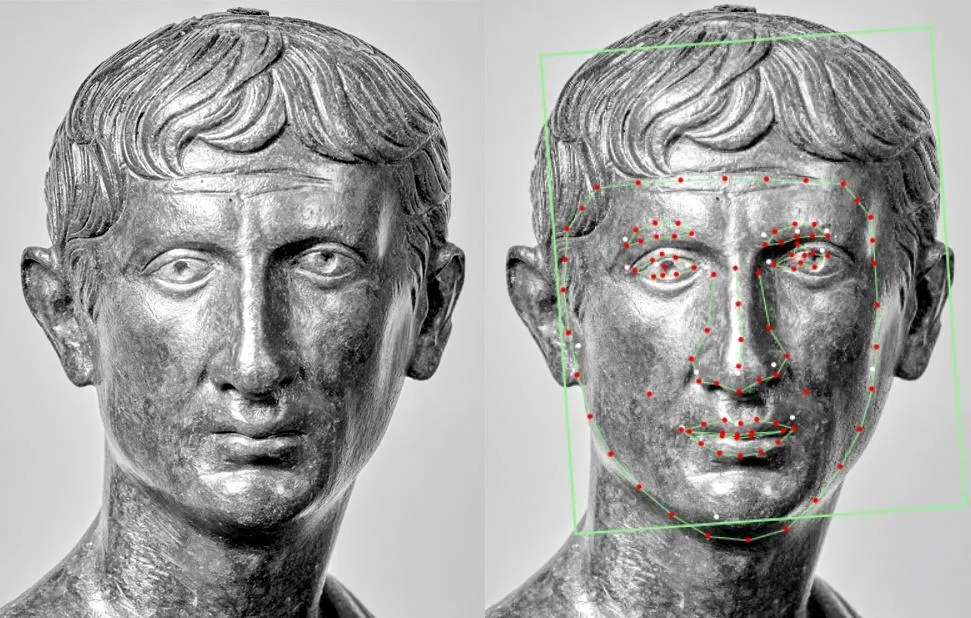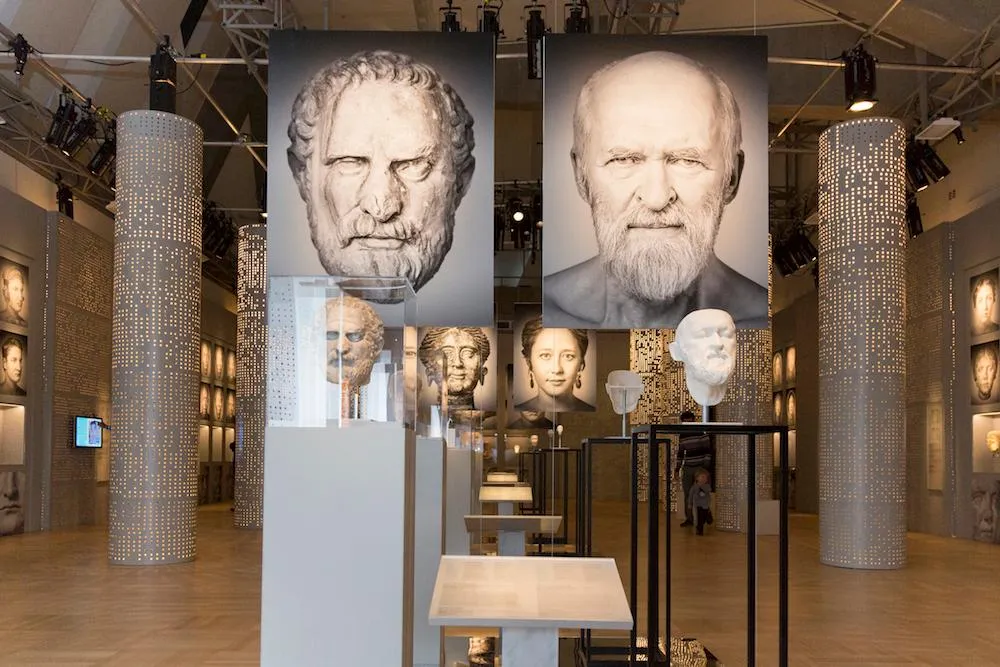Find Your 2,000-Year-Old Doppelgänger
Send the Musée de la Civilisation a photo, and it will match you with an ancient statue

In 2017, the Musée de la Civilisation in Quebec City, Canada, asked members of the general public if they thought they looked more like the goddess Aphrodite, the god Apollo or one of any number of Greco-Roman and Egyptian sculptures dating back some 2,000 years. More than 100,000 people from around the world heeded their call and uploaded selfies to a database. The museum selected the best entries using facial recognition software, and the more than two-dozen final selections are now part of the new exhibition.
Called "My 2,000-Year-Old-Double," the exhibition, which runs now through May 12, displays ancient doppelgängers side by side with portraits of the selected entrants.
"Over 108,000 participants from around the world—including Québec, the United States, Russia, and South Africa—submitted their portraits as part of the online call for doubles launched in 2016," Coline Niess, project manager of the exhibition, tells Smithsonian.com. "The pairing between the faces of contemporary people and 2,000-year-old statues was first done by a facial recognition software and subsequently, the human eye has decided."
Here’s how the process worked. After uploading their head shots to the museum’s website, Betaface API, a facial recognition software program, analyzed the faces and scanned through 123 facial comparison points, such as the bridge of a nose and the shape of a mouth, before matching each person with one of 60 ancient Greco-Roman and Egyptian sculptures.

When this story first published last year, more than 25,000 people had uploaded images, but only five or six were what Hélène Bernier, the museum’s Director of Programming, considered “perfect matches”—meaning photos that resembled a statue with at least 95 percent accuracy and resulted in a double take. One example she pointed to in particular was that of a young Roman man who looks eerily similar to Facebook founder Mark Zuckerberg.
To find your own best match, Bernier offered a few tips. To start, take the photo in a bright and evenly lit space. “If the lighting of the photograph isn’t good, shadows can change your physiognomy,” Bernier tells Smithsonian.com. She also recommends that people use photos where they’re facing forward, not smiling, and are free of wearing glasses or a hat. (Just pretend you’re getting your booking photo taken at your local police precinct.)
While the technology did most of the matchmaking, the curators kept a watchful eye on the submissions. “If a photo had the potential of being a perfect match, we contacted the person and asked for a new photo, or talked to them over Skype. It would have been unfair to discount [someone who may be a close match] just based on the software alone,” she says.

For a project of such massive scale, the museum is working in collaboration with Musée d’art et d’histoire de Genève and the Fondation Gandur pour l’Art, two museums based in Switzerland that share the 60 holdings among their collections. Montréal-based photographer François Brunelle—who is known for his photographs of people who live in different parts of the world and look remarkably alike but have zero relation—is also a key player in the project, and is helping with the selection process.
Once the museum and Brunelle have selected 25 to 30 near-perfect matches, Brunelle will photograph each person alongside his or her ancient doppelgänger to showcase their symmetry. The final collection of photographs will be featured as part of the museum’s yearlong exhibition, which is currently scheduled to run Oct. 24, 2018 through Oct. 27, 2019.
“Many people [may not] realize that many French words come from the Greek language; I always try to remind people that these ancient cultures are still close to us even today,” Bernier says. “We wanted to teach people about their heritage, but in a fun way.”
And if that involves taking selfies, consider us in.

